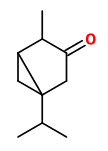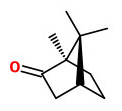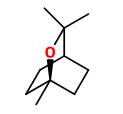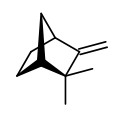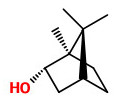Benutzer-Werkzeuge
Salvia officinalis L. - Lamiaceae - common sage, sage, Echter Salbei, Gartensalbei
Perennial herb or little shrub,native to the Mediterranean region, naturalited in Europe and North America, 20-70cm high; leaves lanceolate, felty; flower violet.
„Salvia officinalis has been used since ancient times for warding off evil, snakebites, increasing women's fertility, and more… The plant had a high reputation throughout the Middle Ages, with many sayings referring to its healing properties and value… Modern evidence shows possible uses as an antisweating agent, antibiotic, antifungal, astringent, antispasmodic …“ http://en.wikipedia.org/wiki/Salvia_officinalis
„The factors affecting oil yield and quality of essential oils from Dalmatian sage (Salvia officinalis L.) are analyzed. Distillations of oils from individual plants and GC analyses revealed the presence of three chemotypes with different proportions of α- and β-thujone (α/β 10:1, 1.5:1, and 1:10). Different accessions could also be classified as having high (39-44%), medium (22-28%), or low (9%) total thujone contents. Flowering parts of S. officinalis had higher oil contents (1.6 versus 1.1%) and β-pinene levels (27 versus 10%) than leaves and lower thujone levels (16 versus 31%). Major seasonal changes were found in the composition of oil distilled from a flowering type of Dalmatian sage, but oil yields from healthy, established plants did not vary greatly. Total thujone levels were lowest (25%) around flowering in spring and summer, so autumn or winter was the best harvest time to obtain oils with high thujone levels.“
[Essential Oils from Dalmatian Sage (Salvia officinalis L.): Variations among Individuals, Plant Parts, Seasons, and Sites. Nigel B. Perry, Rosemary E. Anderson, Nerida J. Brennan, Malcolm H. Douglas, Anna J. Heaney, Jennifer A. McGimpsey, and Bruce M. Smallfield, J. Agric. Food Chem., Vol. 47(5), 1999, 2045-2054]
„GC-MS analyses of sage essential oils identified 37 constituents, representing 90.0% of the total oil. The main components were camphor (24.95%), 1,8-cineole (24.75%) and camphene (7.63%). There are many reports on the chemical composition of the oils isolated from the plants belonging to the genus Salvia, most of which
indicate that 1,8-cineole and borneol are the main constituents. These variations in the essential oil composition might have arisen from several differences (climatic,seasonal, geographical, geological). Asllani investigated the composition of essential oils obtained from wild Albanian sage, from detected about 30 were identified. The major components identified were α-thujene (12.2-49.3%), β-thujene (3.1-10.5%), camphor (13.7-37.8%) and 1,8-cineole (3.9-23.4%). These results agree with the results presented here, except that α-thujene and β-thujene were not detected.“
[Chemical Composition of the Essential Oils Obtained From Some Spices Widely Used in Mediterranean Region. Viuda-Martos, Manuel, et al., Acta Chimica Slovenica Vol.54(4), 2007, 921]
Quantity and quality of the essential oils of garden sage (Salvia officinalis L.) of 19 accessions were studied. EO quantity was in the ranges 0.3-2.2% w/w in the first year and 0.9-2.5% w/w in the second year, with mean EO quantities in the second year 1-1.6‐fold higher than in the first year. Two accessions from Romania representing a new Salvia officinalis chemotype with viridiflorol as dominant compound and low amounts of α‐ and β‐thujone.
[Lamien‐Meda, Aline, et al. „Variability of the essential oil composition in the sage collection of the Genebank Gatersleben: a new viridiflorol chemotype.“ Flavour and fragrance journal 25.2 (2010): 75-82]
The main components of oils from S.officinalis populations growing wild in Macedonia were camphor (13.1-25.9%), α-thujone (19.2-26.3%), β-thujone (2.0-5.2%), 1,8-cineole (6.5-13.6%), limonene (1.6-2.1%), α-pinene (0.9-1.4%), borneol (1.0-4.6%), caryophyllene (1.7-5.3%), α-humulene (2.8-7.9%), viridiflorol (4.2-7.9), and manool (2.1-3.7%).
[Essential oil composition of wild growing Sage from R. Macedonia., Stefkov, G., Cvetkovikj, I., Karapandzova, M., Kulevanova, S., Macedonian Pharmaceutical Bulletin, 57(1, 2), 2011, 71-76] http://bulletin.mfd.org.mk/volumes/Volume%2057/57_008.pdf
„Links between phenology, yield and composition of the essential oil of common sage, Salvia officinalis L., grown in Guadalajara (Central Spain) were determined in the different phases of the biological cycle during one year. Data showed an average yield about 1.0%. The analysis of the oil components was carried out by GC-FID and GC/MS. The main oil constituent was α-thujone (40.1-46.5%). Other identified compounds are β-pinene (2.6-4.5%), cineole (3.5-8.7%), β-thujone (4.1-5.6%), camphor (4.1-8.0%), borneol (1.3-3.7%), α-humulene (3.8-7.3%), viridiflorol (3.4-12.6%) and manool (0.1-4.5%). The highest yield of oil was obtained in the period of full flowering and the highest concentration of α-thujone in the period of initial flowering.“
[Seasonal Variation of Essential Oil Yield and Composition of Sage (Salvia officinalis L.) Grown in Castilla-La Mancha (Central Spain). Arraiza, M. P., Arrabal, C., López, J. V., Notulae Botanicae Horti Agrobotanici Cluj-Napoca, vol.40(2), 2012, 106-108]
„The overall aroma profiles of commercial dried sage differ significantly from the profile of macerated fresh leaves. To clarify changes in the key aroma compounds, first an aroma extract dilution analysis was applied on an extract/distillate prepared from the fresh leaves of Italian garden sage cultivated in a green house in Germany. Among the 39 aroma active compounds characterized, (Z)-3-hexenal, 1,8-cineol, borneol and eugenol showed the highest flavor dilution (FD) factors. Odorants identified with FD factors between 64 and 8192 were quantitated to calculate odor activity values (OAV; ratio of concentration to odor threshold). The highest OAVs were determined for myrcene, (Z)-3-hexenal, (1S,2R,4S)-borneol and 1,8-cineol. A mixture of 22 key reference aroma compounds in the same concentrations as determined in the fresh sage leaves successfully mimicked the overall aroma profile of the spice… While all monoterpenes remained nearly unchanged during drying, in particular highly volatile compounds such as dimethyl sulfide or 2- and 3-methylbutanal were decreased. Almost a total loss occurred for 3-(methylthio)propanal, phenylacetaldehyde, and (Z)-3-hexenal. By contrast, storage of the dried leaves for 12 months at room temperature in the dark did not much effect the concentrations of selected key odorants, thus indicating that drying is the most important factor for the changes in aroma compounds.“
[Jonas, Michaela, and Peter Schieberle. „Characterization of the key aroma compounds in fresh leaves of garden sage (Salvia officinalis L.) by means of the sensomics approach: influence of drying and storage and comparison with commercial dried sage.“ Journal of Agricultural and Food Chemistry 69.17 (2021): 5113-5124]
„Drinking or gargling Salvia officinalis L. infusion (sage infusion) is thought to soothe a sore throat, tonsillitis, and inflamed, red gums, although structure-based scientific evidence for the key anti-inflammatory compounds in sage infusion is scarce… A significant, more than 50% mean inhibition of PMA/I-induced IL-6 and IL-8 release was demonstrated for the volatile compounds 1,8-cineole, borneol, camphor, and thujone, but not for the nonvolatile rosmarinic acid when applied in concentrations representative of sage infusion. Therefore, the volatile compounds were found to be more effective than rosmarinic acid. 1,8-Cineole, borneol, camphor, and α-/β-thujone chiefly contribute to the anti-inflammatory activity of sage infusion in human gingival fibroblasts.“
[Identification of 1,8-cineole, borneol, camphor, and thujone as anti-inflammatory compounds in a Salvia officinalis L. infusion using human gingival fibroblasts., Ehrnhöfer-Ressler, M.M., Fricke, K., Pignitter, M., Walker, J.M., Walker, J., Rychlik, M., Somoza, V., Journal of agricultural and food chemistry, 61(14), 2013, 3451-3459]
„A significant, more than 50% mean inhibition of PMA/I-induced IL-6 and IL-8 release was demonstrated for the volatile compounds 1,8-cineole, borneol, camphor, and thujone, but not for the nonvolatile rosmarinic acid when applied in concentrations representative of sage infusion. Therefore, the volatile compounds were found to be more effective than rosmarinic acid. 1,8-Cineole, borneol, camphor, and α-/β-thujone chiefly contribute to the anti-inflammatory activity of sage infusion in human gingival fibroblasts.“
[Ehrnhöfer-Ressler, Miriam M., et al. „Identification of 1, 8-cineole, borneol, camphor, and thujone as anti-inflammatory compounds in a Salvia officinalis L. infusion using human gingival fibroblasts.“ Journal of agricultural and food chemistry 61.14 (2013): 3451-3459]
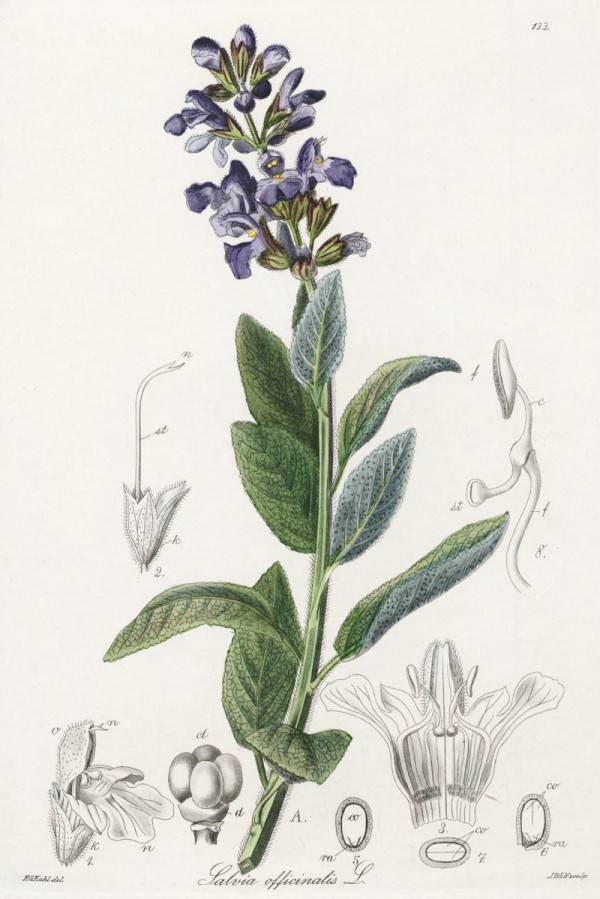
Kohl,F.G., Die officinellen Pflanzen der Pharmacopoea Germanica, t.133 (1891-1895)
http://plantgenera.org/species.php?id_species=903264
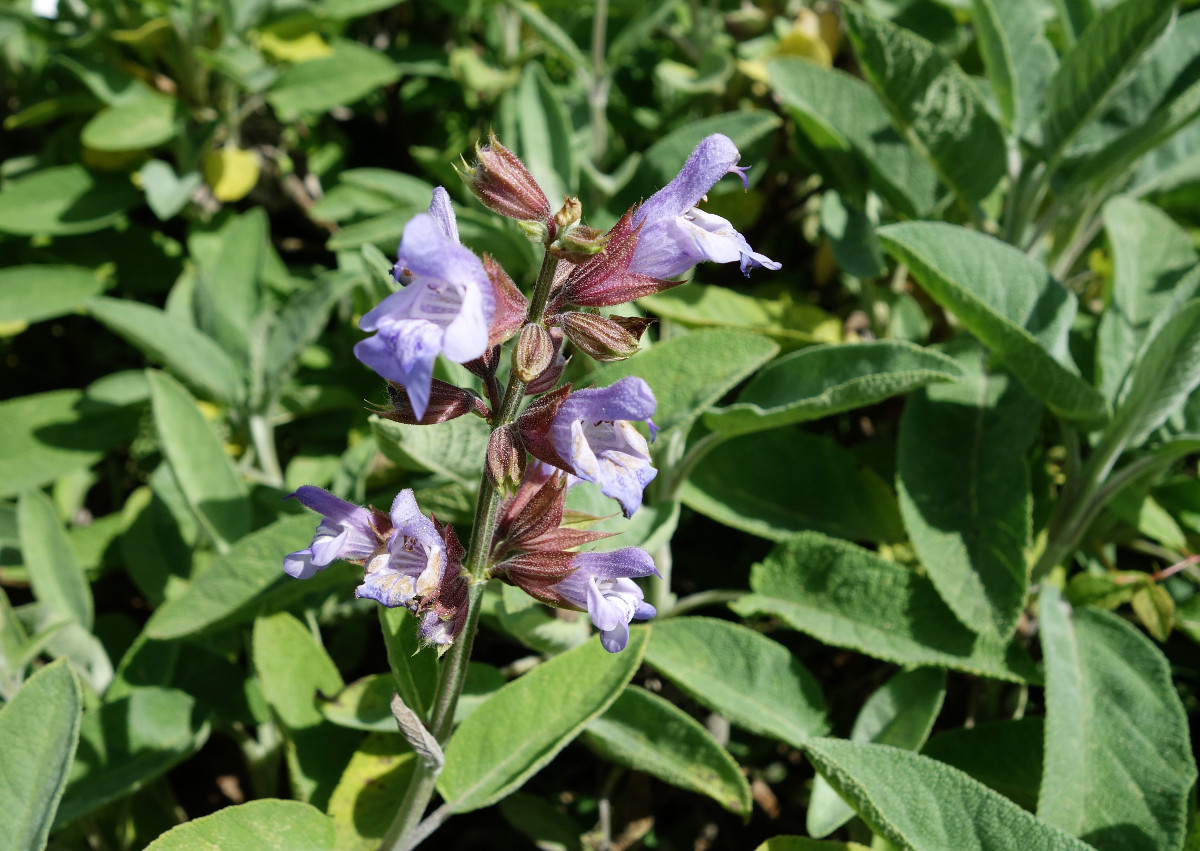
Salvia officinalis, KräuterPark Stolpe 2017, CC BY-SA 3.0, Author: Andreas Kraska

